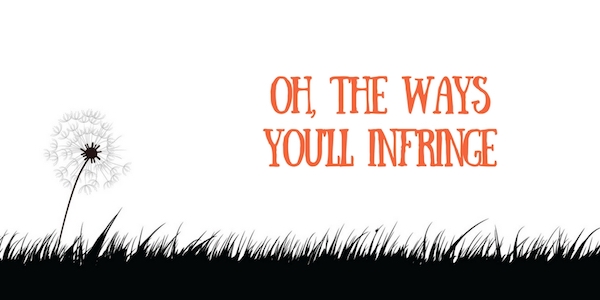 When ComicMix decided to raise funds on Kickstarter for their mashup Oh the Places You’ll Boldly Go, it turned out that court was the first place they ended up.
When ComicMix decided to raise funds on Kickstarter for their mashup Oh the Places You’ll Boldly Go, it turned out that court was the first place they ended up.
According to an article on The Wrap, Dr. Seuss Enterprises (which holds all the rights to the Dr. Seuss works) is suing ComicMix for copyright infringement.
Theodore Geisel (a.k.a., Dr. Seuss) passed away in 1991. And while much of his work has become part of the popular culture—no one needs to be told what it means to “be a Grinch”—his creations are still considered protected intellectual property under copyright laws.
This misstep by ComicMix highlights a couple of assumptions that many artists, including filmmakers, have about how and when other people’s work may be used without permission.
Copyright Outlives the Creator
The legal protection of a work doesn’t expire with its creator. Exactly how long a copyright lasts is a bit of a convoluted calculation, and depends on a number of factors.
Once the author or creator dies, the copyright passes on to either the family, the estate, or some other rights holder (often a publisher or distributor that has purchased the rights).
These subsequent rights holders are just as invested in maintaining the integrity of the copyright as the original creator. Consider these recent lawsuits:
- CBS Paramount (which owns the rights to Gene Roddenberry’s Star Trek franchise) is suing the creators of a fan film, claiming copyright infringement.
- The estate of J.R.R. Tolkien, run by his son, Christopher Tolkien, remains in a protracted dispute with Warner Brothers over the licensing around The Lord of the Rings and The Hobbit.
Popularity Does Not Create Fair Use
Fair Use, the legal doctrine that allows you to use a protected work without the creator’s permission, is a grossly misunderstood concept. The fair use concept was created to protect scholarly articles from copyright claims when authors needed to quote portions of a source.
Fair use does not allow copyrighted material to be copied or reused just because the original has entered the popular consciousness. Popularity increases the likelihood of a copyright infringement suit, not the other way around.
Consider these examples:
- Calvin & Hobbes creator Bill Watterson issued a cease & desist order to a website which superimposed the cartoon’s characters on real photographs.
- Vanilla Ice settled with Queen and David Bowie over the famous riffs found in both Ice, Ice Baby and Under Pressure. He’s not the only to face infringement claims—they are fairly common in music.
Avoiding a Court Appearance
If you want to avoid having court be one of the “places you’ll go,” you need to ensure your film doesn’t carry risk for copyright infringement.
This can be a tricky endeavor for most filmmakers, as there are so many opportunities to create exposure (even without realizing it), and the rules around copyright vary from jurisdiction to jurisdiction.
An annotation guide provided by your screenwriter, followed by a Script Clearance Report, is the best way to understand exactly what exposure your film has for a copyright infringement claim. A script clearance report will check for copyright, trademark, publicity, privacy, defamation, and other forms of infringement, giving you the information you need to make informed decisions.
Since a script clearance report is generally required to carry E & O Insurance anyway, you can save yourself valuable time by getting it early (you need it before production starts).
Get your film off to a great start with a solid legal standing. Order your Script Clearance Report today.

